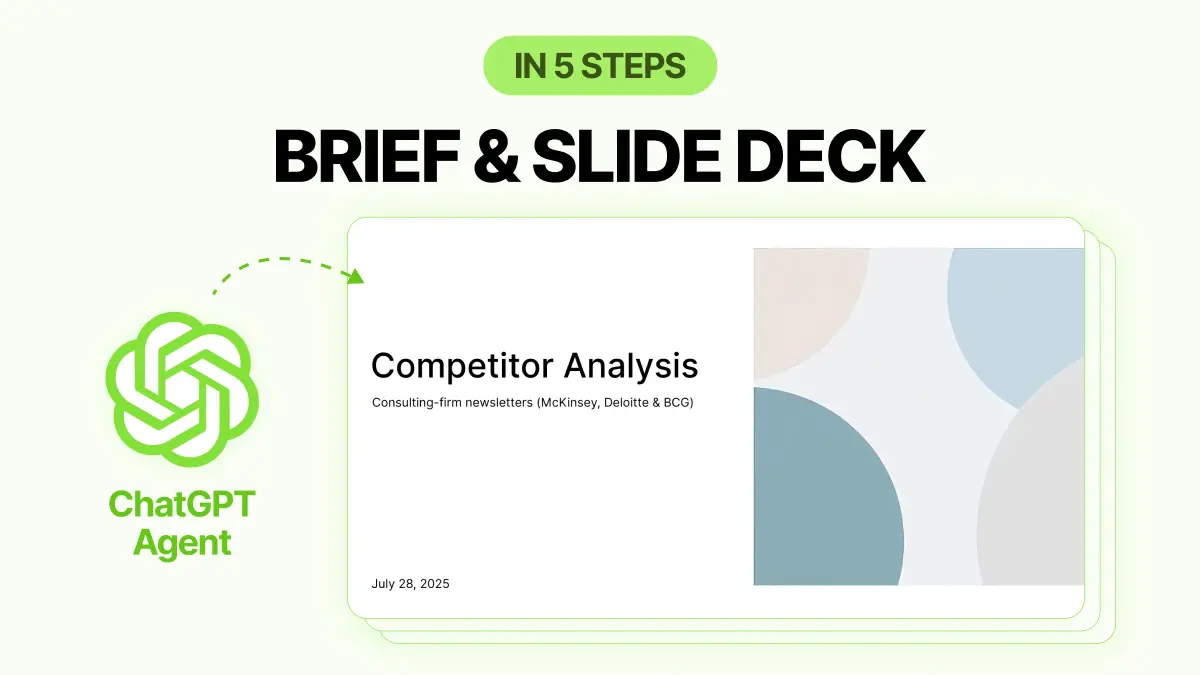Step 1: Turn on Agent Mode
To start, open ChatGPT and select Agent Mode from the tools sidebar, or you can type / into the chat and choose Agent Mode. This mode unlocks browser access and enables ChatGPT to:
- Visit websites
- Download images
- Create a .pptx file
- Perform structured, multi-step research tasks
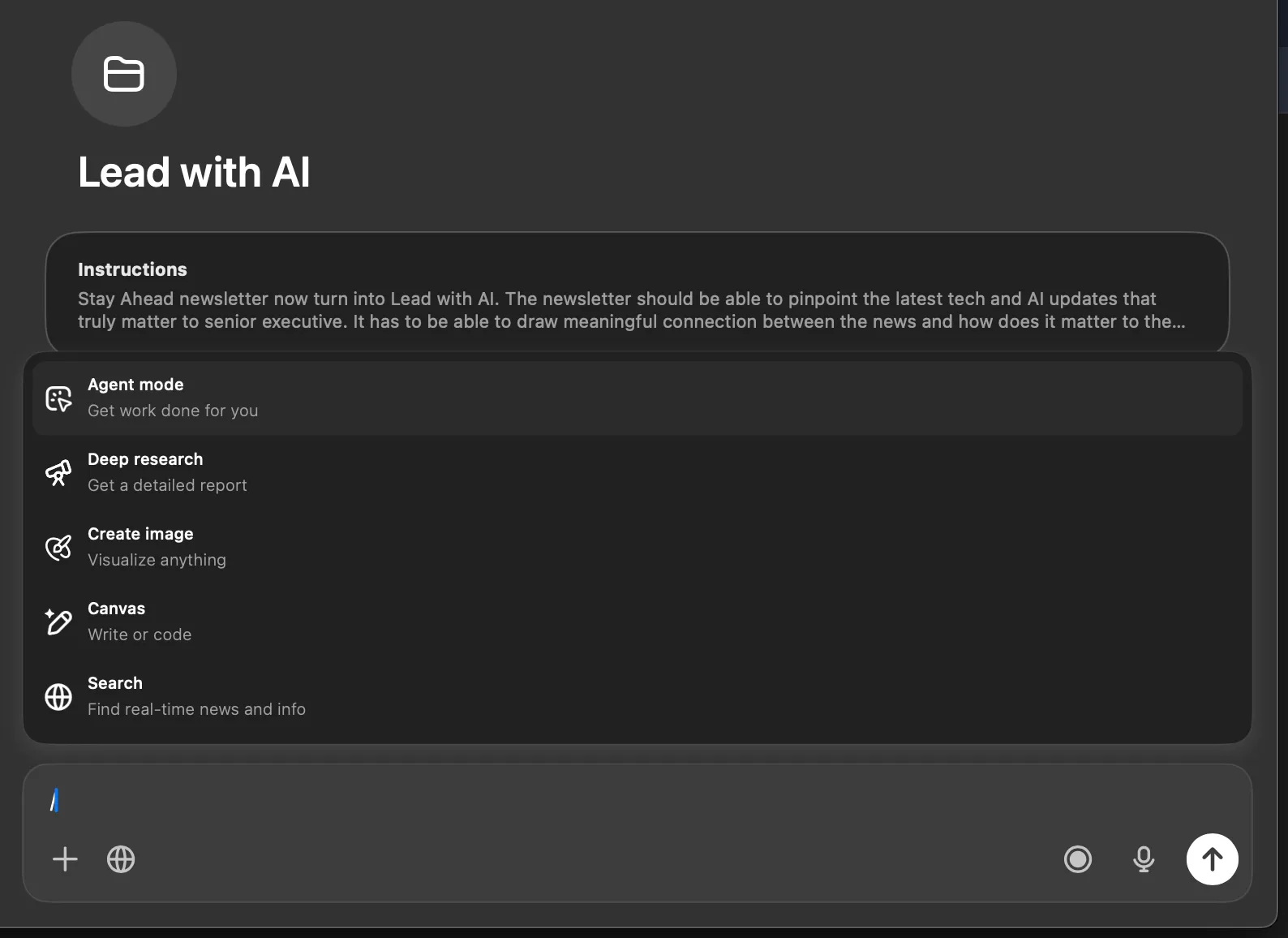
You’ll be delegating the time-intensive parts such as browsing, copying, formatting while staying in control of the direction and output.
Step 2: Start with a detailed prompt
The quality of your analysis starts with the clarity of your request. Use a structured, specific prompt that tells ChatGPT what to look for, how to analyze it, and how you’d like the results delivered.
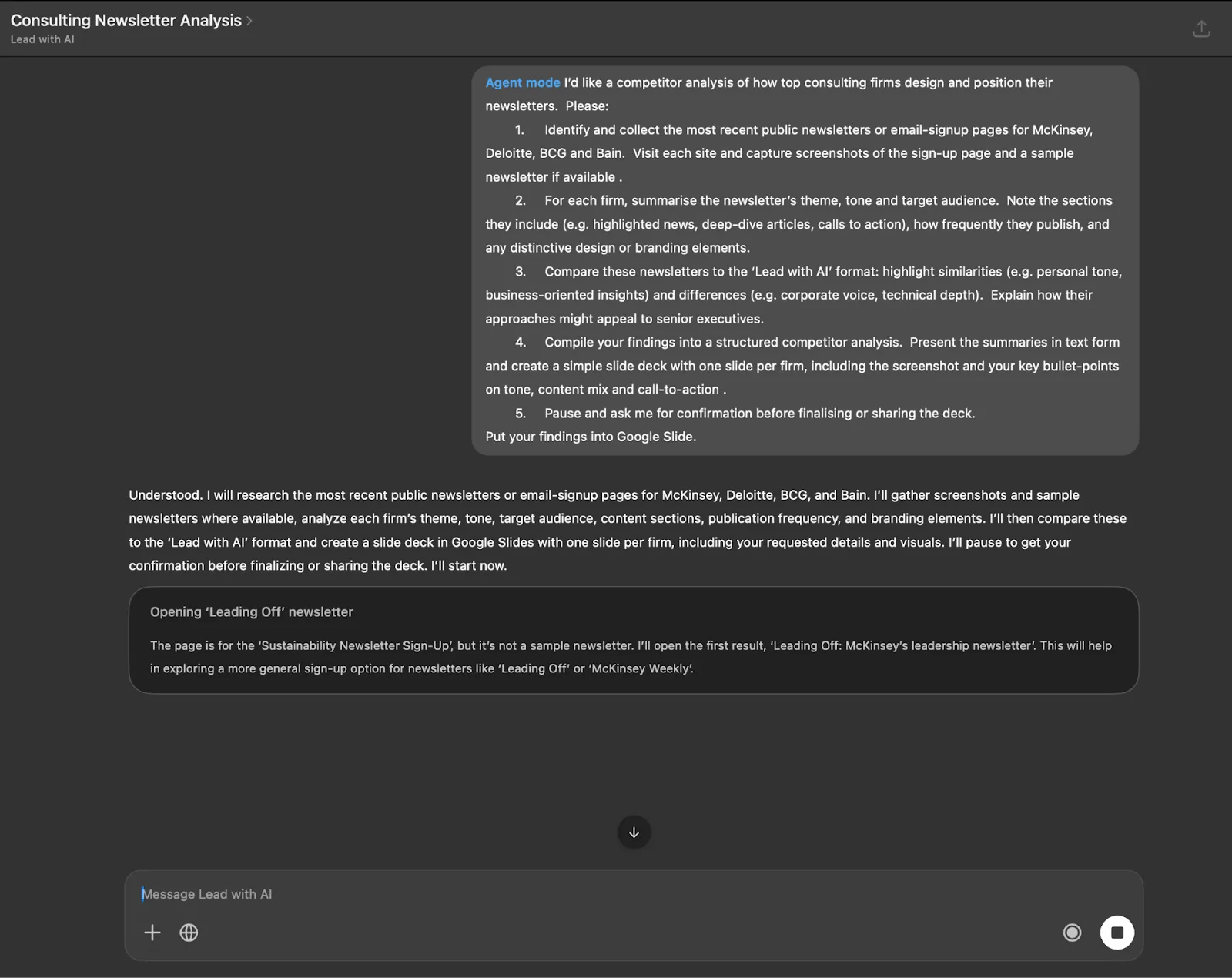
📌 Example prompt:
I’d like a competitor analysis of how top consulting firms design and position their newsletters. Please:
- Identify and collect the most recent public newsletters for McKinsey, Deloitte, and BCG.
- Summarize each newsletter’s theme, tone, and target audience.
- Note their section structure (e.g. deep dives, headlines), publication frequency, and branding.
- Compare these to Lead with AI.
- Compile a slide deck with key bullet points and illustrative images.
This format works for any kind of competitive scan: landing pages, onboarding flows, product pricing, content tone, you just need to swap the subject.
Step 3: Co-create the report by giving directions
Once the agent begins your request, it will actively browse the web such as visiting competitor websites, opening newsletter editions, and even previewing article content. You’ll see its actions unfold live in a progress window, including what it’s reading, clicking, or saving.
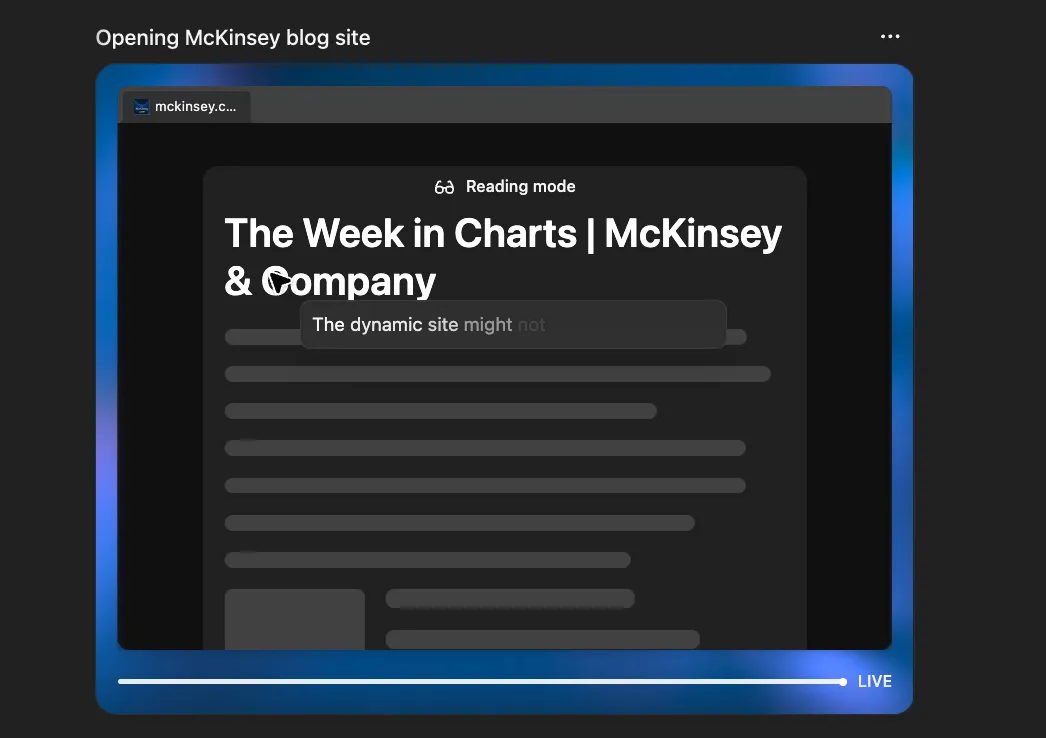
You can guide it in real time by asking it to:
- Expand scope (“Include Bain & Company too”)
- Sharpen tone (“Can you clarify how BCG’s tone feels more personal?”)
- Refine visuals (“Showcase their newsletter thumbnails”)
- Structure outputs (“Put this into a comparison table with 4 columns”)
This step is where your expertise shapes the final product.
Step 4: Review and download
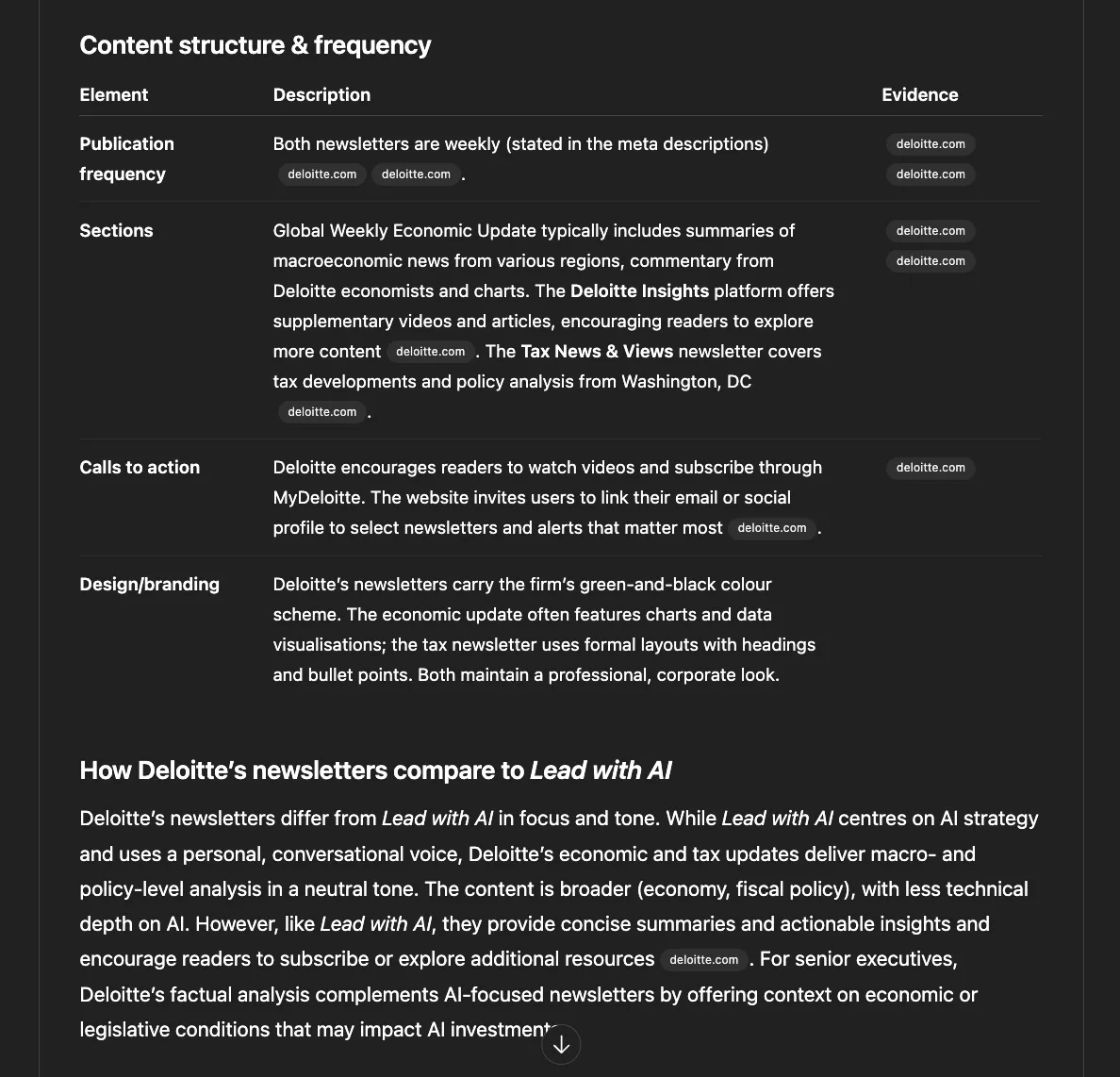
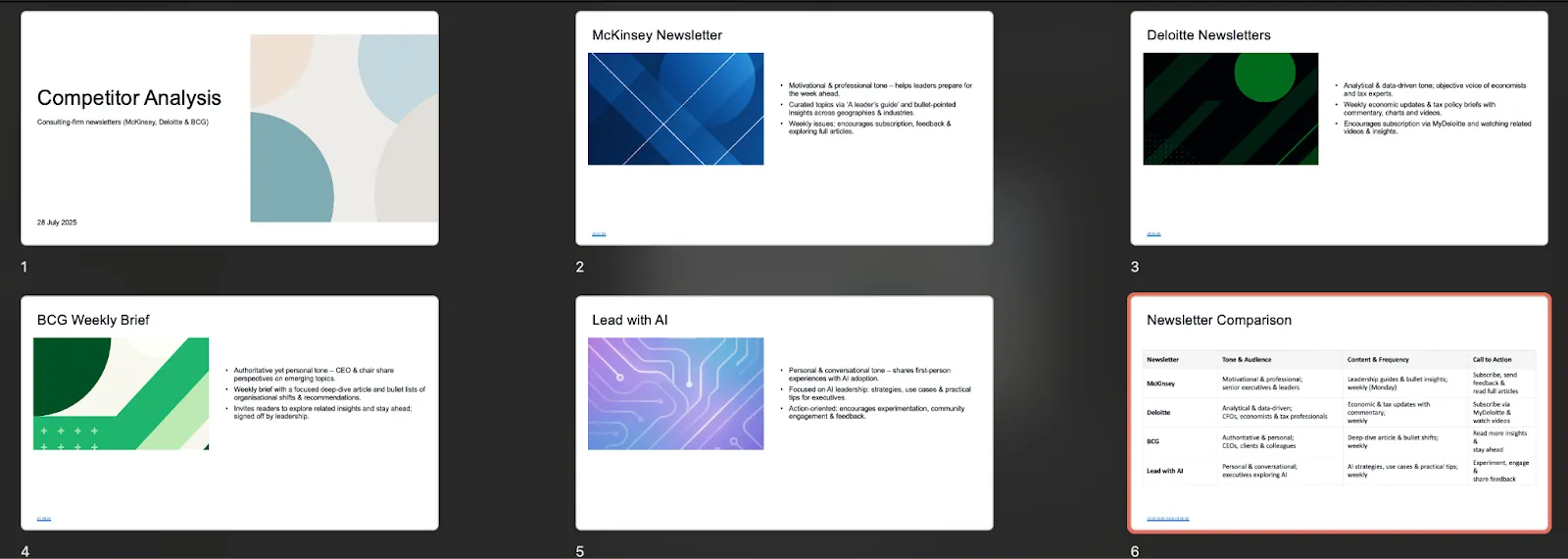
At this stage, you’ll receive two deliverables:
- The Competitor Report
A full write-up summarizing insights, comparisons, and commentary — perfect for downloading as a PDF or Word document. This version is ideal for internal reading, leadership briefings, or sharing via email. - The Slide Deck
A visual presentation of the analysis, typically one slide per competitor plus a comparison or key takeaways slide. You can download the .PPTX file as a starting point to customize for team meetings or exec presentations.
You can now download the file and further customize the final output to match your branding or leadership style.
Step 5: Scale the process: More competitive briefs to try
Now that you’ve done one competitive benchmark, think about how else you can apply this workflow:
- Compare how top startups structure product landing pages
- Audit onboarding flows of AI tools (e.g. Notion AI, Perplexity, ChatGPT)
- Analyze investor decks from YC or Sequoia-backed companies
- Track how competitors pitch their value prop across LinkedIn and newsletters
With a single structured prompt, you can spin up a strategic brief in under an hour every week. Let me know what you would like to try out next!

